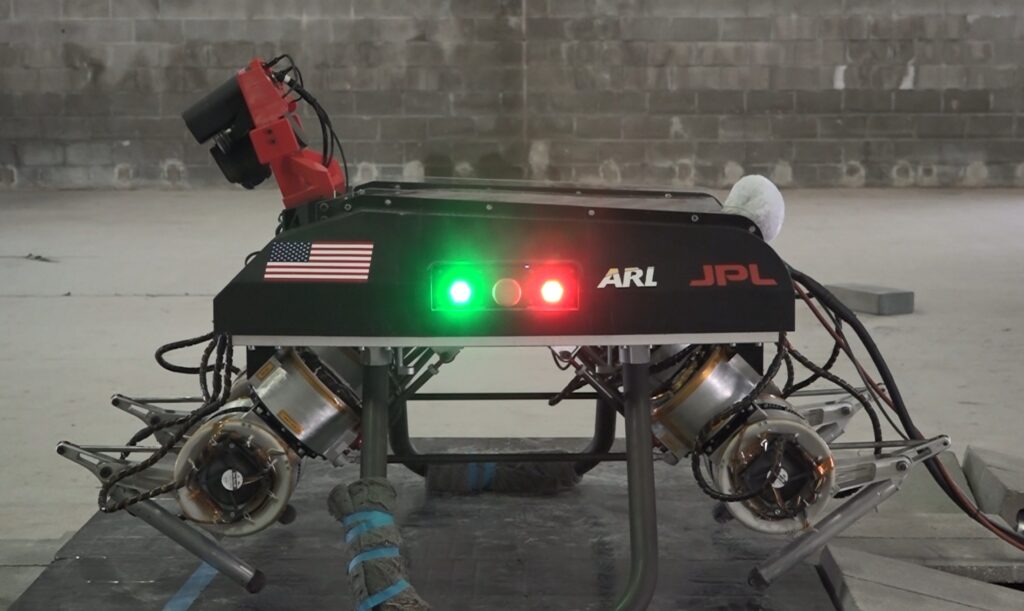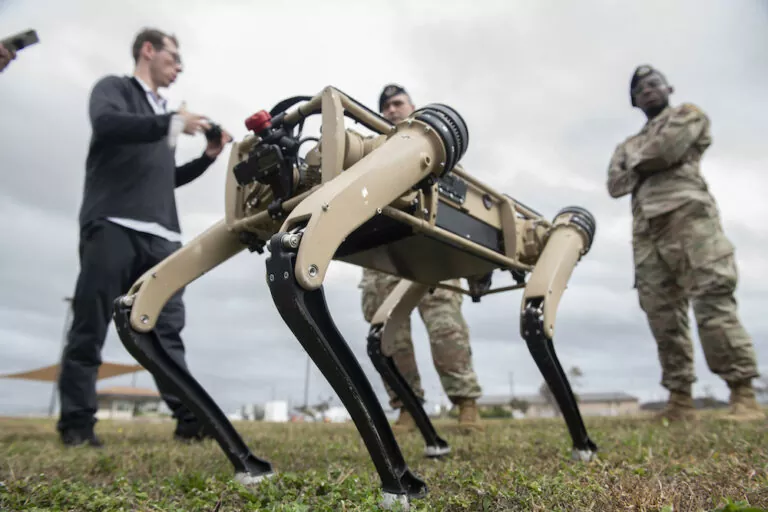US military researchers are working on adding muscles to robots to make them more stronger and agile on the battlefield.
Biohybrid robotics combines living organisms with mechanical systems. The integration will enhance their performance. According to the US Army.
The laboratory-grown tissues fused with the robot’s muscle joints in place of traditional actuators. The US army said in a statement. Actuators are components used for moving and controlling mechanisms.
Greek F-16 viper: First upgraded fighter takes flight
“Though impressive in their own right, today’s robots are deployed to serve a limited purpose than are retrieved some minutes later” a research scientist Dr. Dean Culver at Army Research Laboratory (ARL). “ARL wants robots to be versatile teammates capable of going anywhere soldiers can and more, adapting to the needs of any given situation.”
US Military Researchers:
Researchers with the US Army Combat Capabilities Development Command, now known as DEVCOM, Army Research Laboratory (ARL) are pairing with collaborators at Duke University and the University of North Carolina on high-risk studies in biohybrid robotics.
“Organisms outperform engineered robots in so many ways. Why not use biological components to achieve those remarkable capabilities?” Dean Culver asked rhetorically.

Research Details:
In the 1st phase of the project, US army researchers in cooperation with researchers from Duke University and the University of North Carolina, are focusing on the army’s flapping wing drones, Legged Locomotion and Movement Adaptation (LLAMA) platform, and US Marine Corps’ Legged Squad Support System (LS3).
“One obstacle that faces ground-based robots today is an inability to instantly adjust or adapt to unstable terrain.”
A research scientist Dr. Dean Calver further said,
“Muscle actuation, though certainly not solely responsible for it, is a big contributor to animals’ ability to navigate uneven and unreliable terrain. Similarly, flapping wings and flying organisms’ ability to reconfigure their envelope gives them the ability to dart here and there even among branches. In multi-domain operations, this kind of agility and versatility means otherwise inaccessible areas are now viable, and those options can be critical to the US military’s success.”
The researchers from Duke University will direct computational research while the University of North Carolina will conduct experiments to validate the computational data derived from Duke University’s researchers.
The US Army researchers will work on theoretical mesomechanics (the theory that describes the stages of deformation). That can be tested with data collected from both computational research and experimentation.
$6 trillion and 8 hundred thousand of lives, the cost of US global war on terror
In the end, their work will be supplemented by a separate Duke University team, that is working on macroscopic performance characteristics of muscle, tendon, and ligaments in jumping creatures for use in legged robots.
“Muscle tissue is outstanding at producing a specific amount of mechanical power at a given moment, and its versatility is unrivaled in robotic actuation today.”
How the research be useful?
The research will help the biohybrid engineering community on how to culture strong muscle tissue rather than procure it from a trained organism, he said in his statement. The researchers expect the research to offer insight into the mesomechanics that govern motor protein motion, the kind of motion responsible for muscle contraction overall.
Analysis:
The research will help the US military to fight more precisely and efficiently with advanced, agile, and powerful robots. The advancement in military robots technology also save human lives and increase their chance of survival on the battlefield.
Sources:
- Information published on the US Military website
- Article published in The Defense Post


